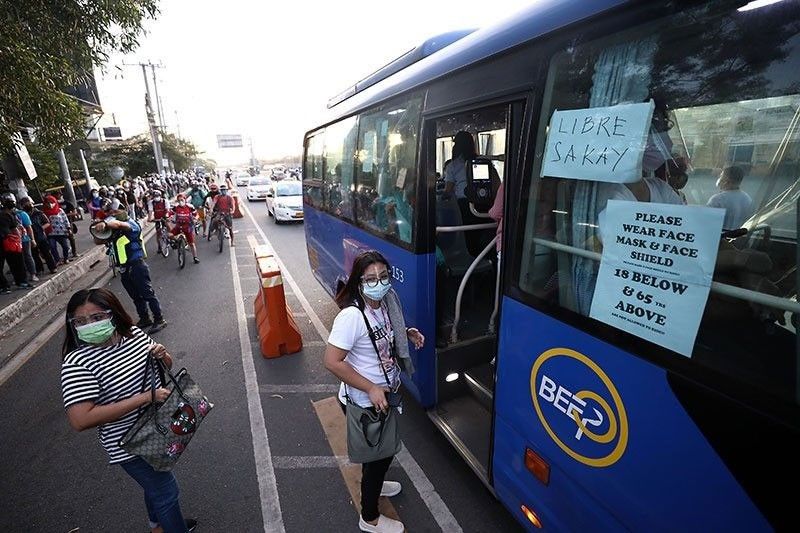Make The Most Of Direct Exposure with Transit Advertising Philippines
Make The Most Of Direct Exposure with Transit Advertising Philippines
Blog Article
Recognizing the Function of Transportation Marketing in Enhancing Brand Name Visibility and Consumer Involvement
Transportation advertising has actually become a critical component in the marketing landscape, supplying distinct opportunities for brand names to raise their visibility and involve consumers successfully. With the capability to get to a restricted and varied target market throughout their daily commutes, these advertising and marketing methods are not merely about presence; they are regarding developing significant connections with possible clients. As we explore the complex advantages and innovative methods within transit marketing, it ends up being vital to think about how these elements collectively influence customer assumption and actions, questioning concerning their long-term effect on brand commitment.
Definition of Transit Marketing
Transit advertising and marketing describes the technique of advertising items, services, or brands through advertisements positioned around mass transit systems. This kind of advertising and marketing includes a selection of placements, consisting of posters on trains and buses, digital screens at transit stations, and covers on the exterior of vehicles. It aims to reach a diverse target market, profiting from the high foot website traffic connected with public transit.
Transit advertising is tactically positioned to record the interest of travelers, that usually invest considerable time waiting or traveling. By integrating promotions right into the day-to-day routines of people, brand names can create an enduring perception and foster brand recognition. The medium is especially reliable in urban atmospheres, where public transport is a primary mode of travel.
Additionally, transportation advertising can facilitate local targeting, permitting organizations to get to particular demographics based on transportation routes and terminal locations. As city populations expand and using public transport boosts, this advertising and marketing technique has actually acquired prominence as a vital element of integrated marketing approaches. The dynamic nature of transit marketing, incorporated with its capacity to engage customers in a restricted environment, emphasizes its value in modern advertising practices.
Advantages of Transit Advertising And Marketing
The effectiveness of transit marketing depends on its ability to deliver a wide variety of advantages to brand names looking for to improve visibility and engagement. One of the key benefits is the substantial reach it provides; transportation advertisements can effectively target varied demographics across metropolitan locations, reaching both commuters and pedestrians alike. This wide direct exposure considerably enhances brand name understanding.
Another benefit is the high frequency of perceptions. As transit lorries follow well-known paths and quit at multiple places, they create repeated direct exposure that reinforces brand name messages. This frequency cultivates knowledge, which is crucial in consumer decision-making.
Transportation advertising and marketing is additionally cost-efficient contrasted to various other media platforms. Given its large reach and capacity for high impacts, brand names frequently experience a reduced expense per thousand impacts (CPM), optimizing their advertising budget.
Moreover, transportation advertisements can develop a feeling of neighborhood link. By aligning with local transit systems, brand names can reverberate with local target markets and cultivate a feeling of local satisfaction. This local method enhances brand name commitment and engagement, making transit advertising and marketing a compelling option for companies aiming to strengthen their visibility in the market.

Efficient Approaches for Transit Projects
To take full advantage of the impact of transit projects, brands must utilize critical planning and execution customized to their target audience. First, identifying the market features of the target market using public transit is essential. This permits brands to create individualized messaging that reverberates with potential customers.
Next, selecting the right transit tools is important. Whether utilizing bus covers, train posters, or digital displays, each medium has distinct benefits that can improve visibility. For example, dynamic visuals on bus wraps can stand out, while digital advertisements can be upgraded regularly to reflect prompt promotions.
Moreover, integrating a cohesive branding approach across transit systems makes sure uniformity and strengthens the brand name's identification. Making use of memorable taglines and eye-catching styles will reinforce brand recall among commuters.
By utilizing these methods, brands can successfully harness the potential of transit marketing, promoting greater understanding and link with their target audience. Inevitably, a well-executed transit campaign can drive considerable growth in brand name visibility and customer involvement.

Determining Impact and Engagement
In assessing the efficiency of transit marketing campaign, precise dimension of effect and involvement is important for brands seeking to optimize their advertising methods. Metrics such as reach, frequency, and impacts provide fundamental information to examine visibility. Analyzing these elements helps determine the amount of potential customers are subjected to the advertisements during their everyday commutes.
Involvement can be further gauged via consumer interactions, such as internet site traffic, social media sites points out, and direct feedbacks to calls-to-action featured in the ads. Making use click here to find out more of devices like QR codes or unique URLs can facilitate monitoring of customer behavior straight connected to transit campaigns. Surveys and comments systems additionally act as important approaches to gather qualitative data on customer understandings and recall of the ad.
Moreover, advanced analytics and attribution models can associate transportation direct exposure with subsequent investing in habits, providing understandings right into the roi. By utilizing a thorough method that integrates quantitative and qualitative measures, brands can establish a nuanced understanding of their transportation advertising and marketing effect. Inevitably, this data-driven technique enables brands to refine their campaigns, ensuring they reverberate efficiently with target market and improve total brand visibility.
Study of Successful Projects
Effective transportation marketing campaign function as compelling examples of how effective methods can elevate brand visibility and involvement. Transit Advertising Philippines. One notable situation is the "I Love New York" campaign, which transformed the city's photo and brought in numerous travelers. By making use of train advertisements, billboards, and bus wraps, the campaign produced a solid, natural brand identity, resulting in you can find out more a significant uptick in tourist and regional business patronage
One more excellent campaign is Coca-Cola's "Share a Coke" effort, which leveraged transportation advertising and marketing to individualize the brand experience. By featuring prominent names on promotional products across different transit systems, Coca-Cola cultivated a deeper psychological link with customers, motivating them to share their experiences on social media.
In addition, the "Got Milk?" campaign efficiently utilized mass transit advertisements to reach a wide target market, strengthening the message of the relevance of milk in a well balanced diet regimen. The campaign saw a quantifiable rise in milk intake in target demographics.
These case studies highlight that when implemented thoughtfully, transportation advertising can considerably enhance brand name exposure, foster consumer engagement, and drive measurable outcomes, showing its important duty in modern advertising and marketing methods. - Transit Advertising Philippines
Conclusion
To conclude, transportation advertising acts as an important tool for enhancing brand name presence and fostering consumer interaction. By utilizing purposefully placed advertisements within public transport systems, brands can properly reach diverse audiences and strengthen acknowledgment with regular direct exposure. The application of targeted messaging and cutting-edge methods additionally amplifies the impact of transit campaigns. Eventually, the ability to determine interaction and assess effective instance researches emphasizes the efficiency of look at more info transportation advertising in driving brand commitment and consumer communications.
Transit marketing has emerged as an essential aspect in the advertising and marketing landscape, using special chances for brand names to elevate their exposure and involve customers effectively.Furthermore, transportation advertising and marketing can promote local targeting, allowing organizations to reach certain demographics based on transportation routes and station places.In examining the performance of transit advertising and marketing campaigns, exact measurement of influence and interaction is essential for brand names looking for to optimize their advertising approaches.Successful transit advertising and marketing projects offer as engaging instances of just how effective techniques can raise brand presence and involvement.In conclusion, transportation advertising offers as a crucial device for enhancing brand visibility and fostering consumer engagement.
Report this page